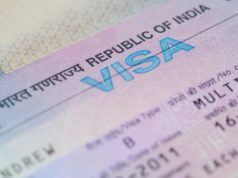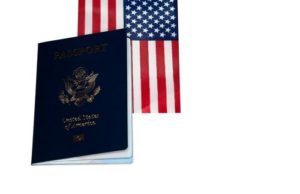
Full Guide to the Visa Bulletin: A Comprehensive Overview of Important Information
The visa bulletin is a valuable tool for immigrants seeking to come to the United States. It provides up-to-date information on the availability of immigrant visas in a particular category and country. The Department of State, in conjunction with US Citizenship and Immigration Services (USCIS), releases a monthly visa bulletin that provides this information.
The visa bulletin has become particularly important in recent years due to the limited availability of immigrant visas and the long backlogs that applicants face in many categories. This article will provide a full guide to the visa bulletin, including an explanation of the different categories, how to read the bulletin, and other important information.
Overview of Immigrant Visa Categories
Before diving into the visa bulletin, it is important to understand the different immigrant visa categories. There are two main types of immigrant visas: family-based and employment-based. Within each of these categories are subcategories, as well as country-specific limits on the number of visas available.
Family-based visas are available to close relatives of US citizens and permanent residents. These visas include immediate relatives (spouses, children under 21, and parents of US citizens) and other family members, such as siblings and adult children of US citizens and permanent residents.
Employment-based visas are available to individuals who meet certain criteria for employment in the United States. These visas include EB-1 visas for priority workers such as outstanding professors, researchers, and executives; EB-2 visas for professionals with advanced degrees or exceptional ability; and EB-3 visas for skilled workers, professionals, and other workers.
There are also special categories of immigrant visas, such as those for refugees and diversity visas, which are available to individuals from countries with historically low rates of immigration to the United States.
Understanding the Visa Bulletin
The visa bulletin is divided into two main sections: the final action dates chart and the dates for filing chart. The final action dates chart provides the latest dates when visas are available for issuance to those who are ready to be scheduled for their immigrant visa interview. The dates for filing chart, on the other hand, indicates when applicants may submit their Green Card applications.
Both charts are organized according to the immigrant visa category and the country of chargeability. The country of chargeability generally refers to the country of an applicant’s birth, but in certain cases, it can be the country of an applicant’s spouse or parent’s birth.
The visa bulletin is released on the 15th of every month. Applicants should check the bulletin regularly to see if the date for their immigrant visa category has progressed, which means that visas are available for issuance.
Reading the Visa Bulletin
The final action dates chart and the dates for filing chart list the categories of immigrant visas for which visas are currently available. The availability of visas is determined by the preference category, the priority date, and the country of the applicant’s birth.
The preference category refers to the type of immigrant visa, such as family-based or employment-based, and the priority date is the date on which the applicant’s petition was filed. The priority date is used to establish the applicant’s place in the visa queue. Applicants with earlier priority dates generally receive visas before those with later priority dates.
For family-based visas, the priority date is the date on which the I-130 Petition for Alien Relative was filed. For employment-based visas, the priority date is the date on which the labor certification was filed.
Applicants should note that the priority date can change over time. For example, if a petition is upgraded from EB-3 to EB-2, the priority date will change to the later of the two dates.
The final action dates chart indicates the latest priority dates for which visas are currently available. If an applicant’s priority date is earlier than the date listed on the chart, they can schedule an interview for their immigrant visa at the US embassy or consulate in their home country.
The dates for filing chart indicates the earliest priority dates for which applicants may submit their applications for adjustment of status to permanent residency. Adjustment of status is the process by which applicants can apply for their Green Cards while remaining in the United States. However, applicants cannot submit their applications until the dates listed on the chart.
Updates to the Visa Bulletin
The visa bulletin can change from month to month. If visa demand in a particular category or country is higher than anticipated, the final action dates may retrogress, or move backward, to an earlier priority date. This means that some applicants may have to wait longer to receive their visas.
Alternatively, if there is low demand for a particular category or country, the final action dates may advance at a much faster pace. This can benefit applicants whose priority dates are later in the queue.
One recent change to the visa bulletin is the inclusion of a chart listing the movement of the priority dates for each category over the past year. This can be useful for applicants to see the trends in visa availability and estimate when their priority dates may become current.
Conclusion
The visa bulletin is a crucial tool for anyone seeking to immigrate to the US. It provides important information on the availability of immigrant visas and can help applicants plan their next steps in the immigration process.
By understanding the different categories of immigrant visas, how to read the visa bulletin, and the updates that can occur from month to month, applicants can stay informed and maximize their chances of success in their immigration journey.
VISA BULLETIN
NOVEMBER 2011
FAMILY-SPONSORED PREFERENCES
First:(F1) Unmarried Sons and Daughters of U.S. Citizens: 23,400 plus any numbers not required for fourth preference.
Second: Spouses and Children, and Unmarried Sons and Daughters of Permanent Residents: 114,200, plus the number (if any) by which the worldwide family preference level exceeds 226,000, plus any unused first preference numbers:
A. (F2A) Spouses and Children of Permanent Residents: 77% of the overall second preference limitation, of which 75% are exempt from the per-country limit;
B. (F2B) Unmarried Sons and Daughters (21 years of age or older) of Permanent Residents: 23% of the overall second preference limitation.
Third:(F3) Married Sons and Daughters of U.S. Citizens: 23,400, plus any numbers not required by first and second preferences.
Fourth:(F4) Brothers and Sisters of Adult U.S. Citizens: 65,000, plus any numbers not required by first three preferences.
On the chart below, the listing of a date for any class indicates that the class is oversubscribed (see paragraph 1); “C” means current, i.e., numbers are available for all qualified applicants; and “U” means unavailable, i.e., no numbers are available. (NOTE: Numbers are available only for applicants whose priority date is earlier than the cut-off date listed below.)
|
Family- Sponsored |
All Chargeability Areas Except Those Listed |
CHINA- mainland born |
INDIA |
MEXICO |
PHILIPPINES |
|
F1 |
22JUL04 |
22JUL04 |
22JUL04 |
01APR93 |
08FEB97 |
|
F2A * |
15FEB09 |
15FEB09 |
15FEB09 |
01DEC08 |
15FEB09 |
|
F2B |
01AUG03 |
01AUG03 |
01AUG03 |
22NOV92 |
15JUL01 |
|
F3 |
22SEP01 |
22SEP01 |
22SEP01 |
08DEC92 |
22JUN92 |
|
F4 |
15JUN00 |
15JUN00 |
15JUN00 |
22APR96 |
22AUG88 |
*NOTE: For November, F2A numbers EXEMPT from per-country limit are available to applicants from all countries with priority dates earlier than 01DEC08. F2A numbers SUBJECT to per-country limit are available to applicants chargeable to all countries EXCEPT MEXICO with priority dates beginning 01DEC08 and earlier than 15FEB09. (All F2A numbers provided for MEXICO are exempt from the per-country limit; there are no F2A numbers for MEXICO subject to per-country limit.)
5. Section 203(b) of the INA prescribes preference classes for allotment of Employment-based immigrant visas as follows:
EMPLOYMENT-BASED PREFERENCES
First: Priority Workers: 28.6% of the worldwide employment-based preference level, plus any numbers not required for fourth and fifth preferences.
Second: Members of the Professions Holding Advanced Degrees or Persons of Exceptional Ability: 28.6% of the worldwide employment-based preference level, plus any numbers not required by first preference.
Third: Skilled Workers, Professionals, and Other Workers: 28.6% of the worldwide level, plus any numbers not required by first and second preferences, not more than 10,000 of which to “*Other Workers”.
Fourth: Certain Special Immigrants: 7.1% of the worldwide level.
Fifth: Employment Creation: 7.1% of the worldwide level, not less than 3,000 of which reserved for investors in a targeted rural or high-unemployment area, and 3,000 set aside for investors in regional centers by Sec. 610 of Pub. L. 102-395.
On the chart below, the listing of a date for any class indicates that the class is oversubscribed (see paragraph 1); “C” means current, i.e., numbers are available for all qualified applicants; and “U” means unavailable, i.e., no numbers are available. (NOTE: Numbers are available only for applicants whose priority date is earlier than the cut-off date listed below.)
|
Employment- Based |
All Charge-ability Areas Except Those Listed |
CHINA- mainland born |
INDIA |
MEXICO |
PHILIPPINES |
|
1st |
C |
C |
C |
C |
C |
|
2nd |
C |
01NOV07 |
01NOV07 |
C |
C |
|
3rd |
22DEC05 |
22AUG04 |
22JUL02 |
22DEC05 |
22DEC05 |
|
Other Workers* |
15NOV05 |
22APR03 |
15JUN02 |
15NOV05 |
15NOV05 |
|
4th |
C |
C |
C |
C |
C |
|
Certain Religious Workers |
C |
C |
C |
C |
C |
|
5th |
C |
C |
C |
C |
C |
*Employment Third Preference Other Workers Category: Section 203(e) of the Nicaraguan and Central American Relief Act (NACARA) passed by Congress in November 1997, as amended by Section 1(e) of Pub. L. 105-139, provides that once the Employment Third Preference Other Worker (EW) cut-off date has reached the priority date of the latest EW petition approved prior to November 19, 1997, the 10,000 EW numbers available for a fiscal year are to be reduced by up to 5,000 annually beginning in the following fiscal year. This reduction is to be made for as long as necessary to offset adjustments under the NACARA program. Since the EW cut-off date reached November 19, 1997 during Fiscal Year 2001, the reduction in the EW annual limit to 5,000 began in Fiscal Year 2002.
6. The Department of State has a recorded message with visa availability information which can be heard at: (202) 663-1541. This recording is updated on or about the tenth of each month with information on cut-off dates for the following month.
B. DIVERSITY IMMIGRANT (DV) CATEGORY
Section 203(c) of the INA provides up to 55,000 immigrant visas each fiscal year to permit additional immigration opportunities for persons from countries with low admissions during the previous five years. The NACARA stipulates that beginning with DV-99, and for as long as necessary, up to 5,000 of the 55,000 annually-allocated diversity visas will be made available for use under the NACARA program. This resulted in reduction of the DV-2012 annual limit to 50,000. DV visas are divided among six geographic regions. No one country can receive more than seven percent of the available diversity visas in any one year.
For November, immigrant numbers in the DV category are available to qualified DV-2012 applicants chargeable to all regions/eligible countries as follows. When an allocation cut-off number is shown, visas are available only for applicants with DV regional lottery rank numbers BELOW the specified allocation cut-off number:
|
Region |
All DV Chargeability Areas Except Those Listed Separately |
|
|
AFRICA |
13,000 |
Except: Egypt 8,000 |
|
ASIA |
10,000 |
|
|
EUROPE |
11,000 |
|
|
NORTH AMERICA |
4 |
|
|
OCEANIA |
500 |
|
|
SOUTH AMERICA, |
550 |
Entitlement to immigrant status in the DV category lasts only through the end of the fiscal (visa) year for which the applicant is selected in the lottery. The year of entitlement for all applicants registered for the DV-2012 program ends as of September 30, 2012. DV visas may not be issued to DV-2012 applicants after that date. Similarly, spouses and children accompanying or following to join DV-2012 principals are only entitled to derivative DV status until September 30, 2012. DV visa availability through the very end of FY-2012 cannot be taken for granted. Numbers could be exhausted prior to September 30.
C. ADVANCE NOTIFICATION OF THE DIVERSITY (DV) IMMIGRANT CATEGORY RANK CUT-OFFS WHICH WILL APPLY IN DECEMBER
For December, immigrant numbers in the DV category are available to qualified DV-2012 applicants chargeable to all regions/eligible countries as follows. When an allocation cut-off number is shown, visas are available only for applicants with DV regional lottery rank numbers BELOW the specified allocation cut-off number:
|
Region |
All DV Chargeability Areas Except Those Listed Separately |
|
|
AFRICA |
18,500 |
Except: |
|
ASIA |
15,000 |
|
|
EUROPE |
13,500 |
|
|
NORTH AMERICA |
5 |
|
|
OCEANIA |
575 |
|
|
SOUTH AMERICA, |
600 |
D. CHINA-MAINLAND BORN AND INDIA EMPLOYMENT-BASED SECOND PREFERENCE VISA AVAILABILITY IN THE COMING MONTHS
Visa Bulletin Explained:
The Visa bulletin is an information-based document or web page that supplies non-citizens with valuable information concerning the ever-changing laws and regulations associated with the obtainment of a Visa or green card.
The visa-bulletin is a government-issued and updated; the information supplied enables a non-immigrant, in the process of applying for residency or citizenship, to observe vital updates that will invariably affect their application.
The majority of green card applicants must wait before they can obtain a green card; this delay is associated with the United States’ tendency to place limits on the number of Visas offered and the types of immigrants that can be approved each year. To limit immigration of certain countries and to encourage immigration of other nations, the United States’ government places a quota for all categories concerning immigration. These quotas are active during the given fiscal year and then reset for the subsequent year.
To aid those involved with immigration, the visa bulletin will constantly update their petitions and application processes during the grace period.
The Visa Bulleting, through The United States’ Department of State, publishes a monthly “Visa Bulletin.”
The Visa bulletin demonstrates and reveals what cases currently possess a “visa number”; this number will reveal which beneficiaries can process and resume their applications.
If an applicant is a beneficiary of an immigration petition that possesses a quota, the individual can use the Visa Bulletin to elucidate on their status concerning the acquisition of a green card.
The Visa Bulletin also provides information concerning the United States’ Diversity Visa Program, which is also known as the green card lottery.
Instructions Concerning the Visa Bulletin
Before viewing the Visa Bulletin, an applicant must first understand their attached priority date. To find out their priority date, the applicant must refer to their USCIS notice of receipt. The applicant, or the petitioner, should receive this receipt shortly after the petition for immigration was filed. The priority date is used to mark the date when a visa number becomes available to the applicant.
Following acknowledgement of the priority date, the applicant must then access the monthly Visa Bulletin. The Visa Bulletin can be accessed through the State Department’s Bureau of Consular Affairs web site.
When accessing the Visa Bulletin the applicant must observe their visa preference category. Refer to the USCIS website for details on specific green card preference categories.
The applicant must then locate his or her country of residence on the Visa Bulletin. The Bulleting shows the visa preference categories in one column and the coordinating dates in the parallel column. The majority of countries are grouped together, although a few exceptions—such as India, Mexico, China, and the Philippines—are listed separately. These separated countries have the highest number of applicants.
Once the country has been selected, check the cut-off date or status indicator. If the selection reads “C” for “Current” it means visa numbers are available for all pending applications. If the selection reads “U” it means no visa numbers are available. If a date shows up, the applicant must compare it with their priority date; a visa number will be available if the priority date is earlier than the cut-off date.
Once a visa number is available proceed with the application.





















